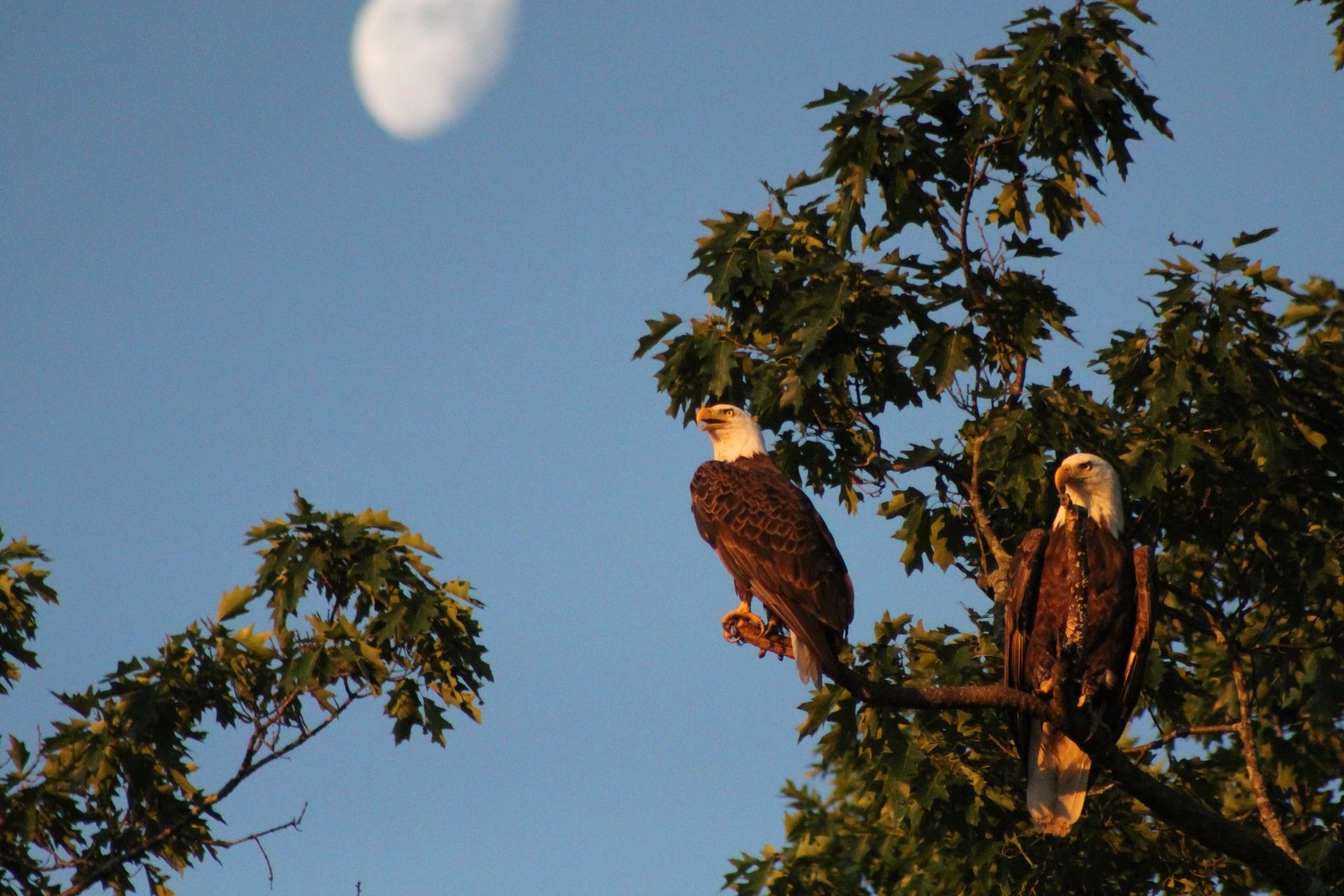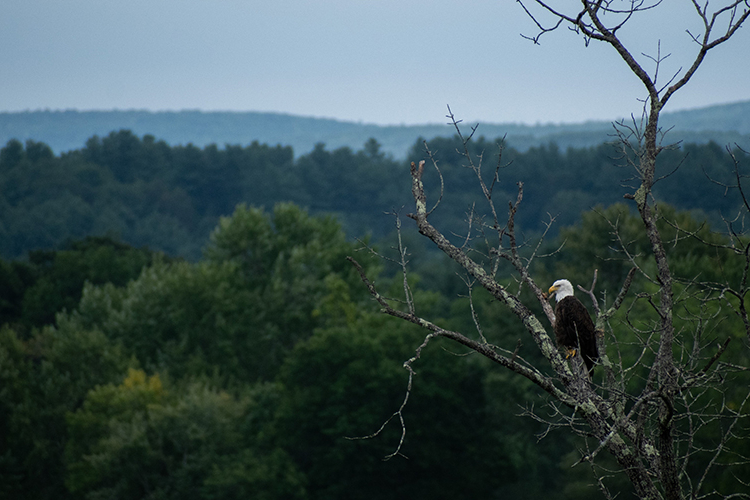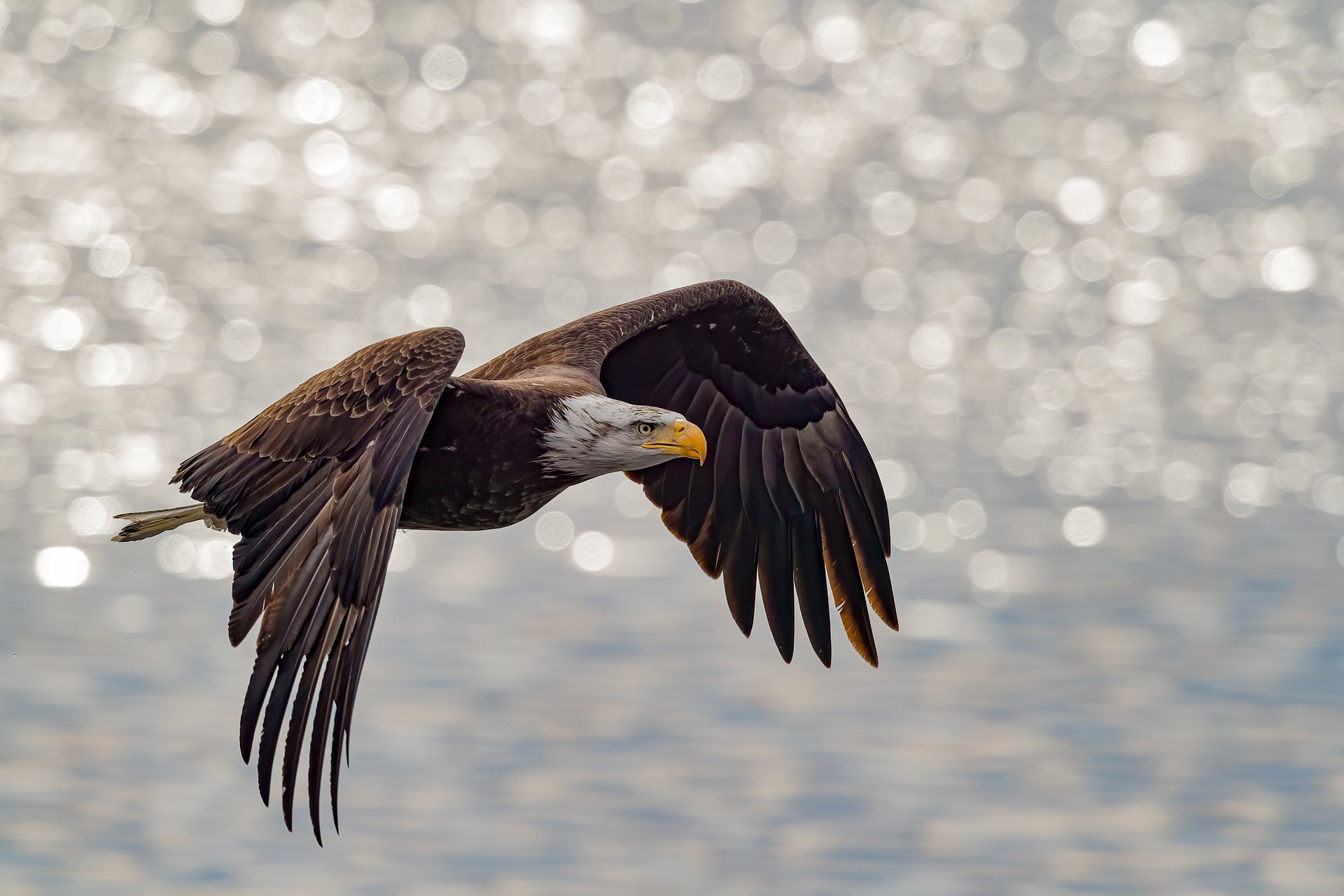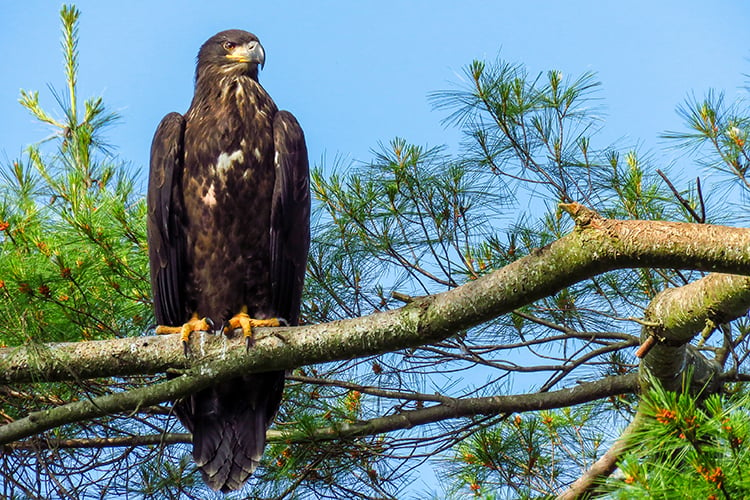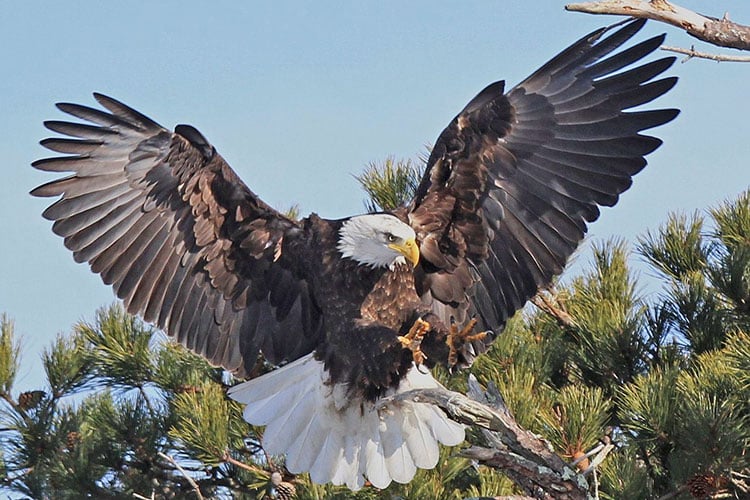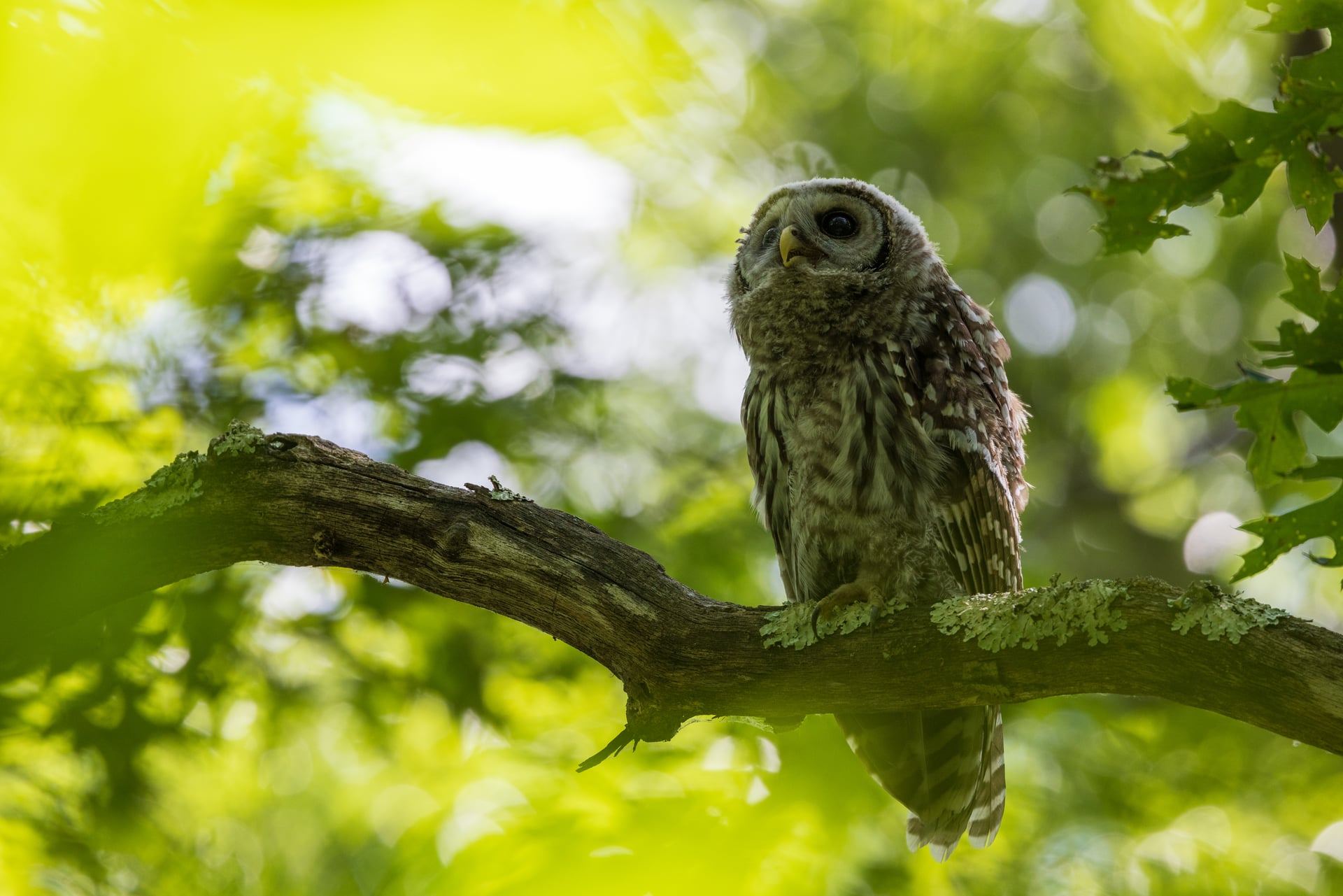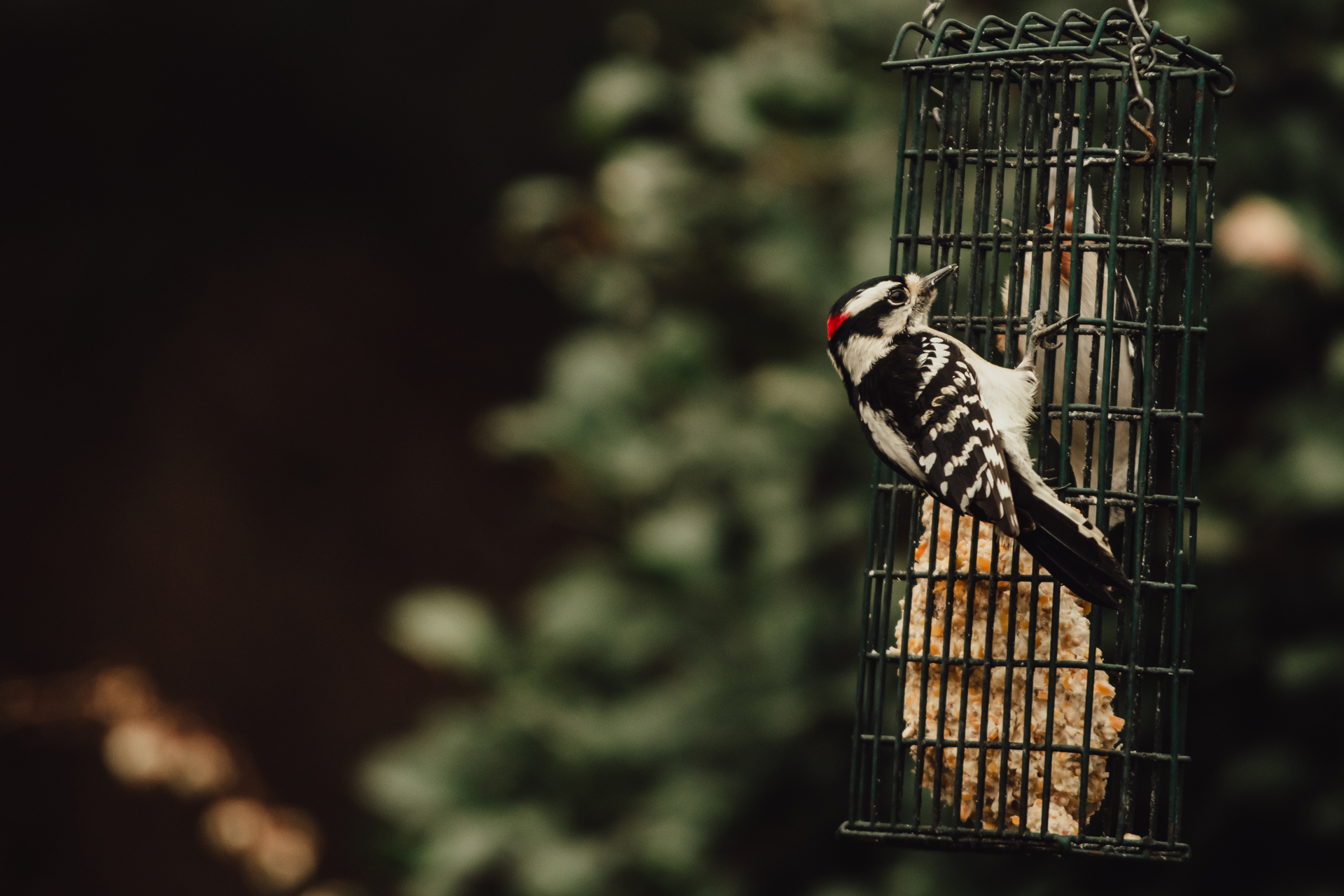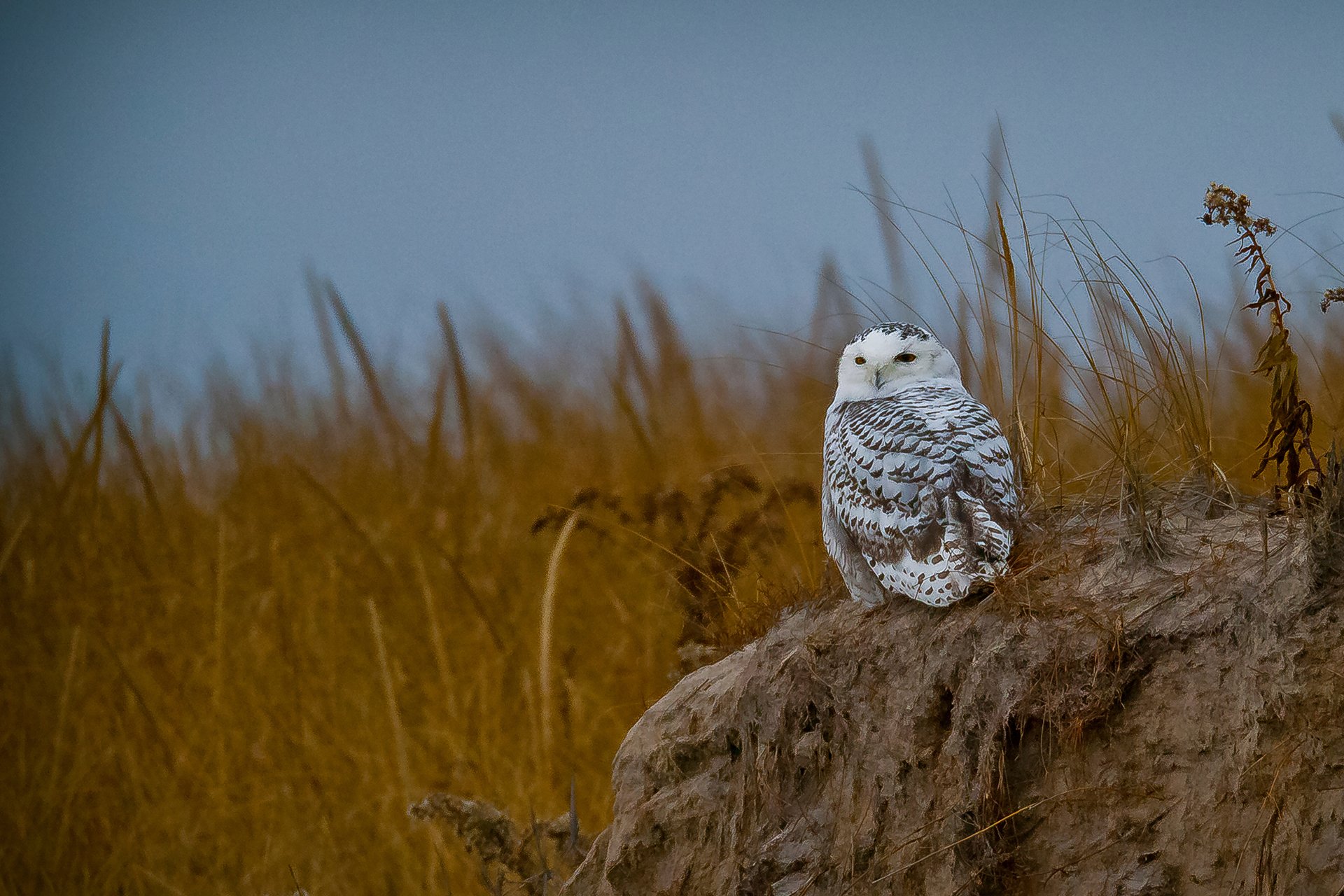Birds in Massachusetts
Bald Eagles
The Bald Eagle (Haliaeetus leucocephalus) has been a powerful emblem for thousands of years. Revered by many indigenous First Nations peoples to this day, early European settlers also declared it the symbol of their new homeland.
Sometimes fittingly referred to as the "American Eagle," it lives only in North America and is typically found near water (fresh or salt).
How to Identify Bald Eagles
An adult Bald Eagle is unmistakable—a bright yellow beak with a striking white head and tail that contrasts sharply with its dark body. They are the largest bird of prey in Massachusetts and can have wingspans up to 7 feet wide at full maturity. However, immature bald eagles can look starkly different from their adult plumages.
Immature Bald Eagles
During their first year, young birds are entirely dark. Birds in their second and third years sport a pattern of mottled brown and white. The Golden Eagle (Aquila chrysaetos), which is only occasionally seen in Massachusetts, can resemble a young Bald Eagle since it's entirely dark with a golden wash over its head and neck. It takes approximately 4-5 years for immature bald eagles to acquire their adult plumage.
Bald Eagle Behavior
Bald Eagle Lifespan
Bald eagles mate for life. Both the male and female work together to construct a nest of sticks lined with finer materials, usually high in a living tree. They typically return to the same nest each year, adding new material with every breeding season. In fact, nests that are 30-40 years old have been recorded—weighing 1 ton or more and up to 12 feet deep!
Females lay 1-3 eggs, which hatch at approximately 35 days. Both parents share in the incubation and feeding of the young. In July, somewhere between 10-14 weeks after the babies hatch, they’re ready leave the nest. However, the parents will continue to feed and care for them until September or even October.
Once the young eagles are able to find food on their own (usually in early fall), the parents go their separate ways and remain solitary until the following breeding season.
What Do Bald Eagles Eat?
Bald Eagles are opportunistic feeders. They mainly prey on fish but will also readily dine on carrion. In addition, they frequently use their large size to steal food from Osprey and other birds.
They hunt and eat fish when there's open water. During the winter months, they also prey on the ducks and geese they find swimming in rivers or standing on the ice. Depending on the availability of food, Bald Eagles can fly dozens and dozens of miles from one food source to another.
Bald Eagle Call
Threats Facing Bald Eagles
DDT Linked to Bald Eagle Population Decline
The Bald Eagle was once a relatively abundant species across North America, but it suffered an alarming decline in the 1950s and 1960s due to the widespread use of the toxic pesticide DDT. In response, the federal government banned the use of DDT in 1972.
In 1982, the MA Division of Fisheries & Wildlife (MassWildlife) teamed up with Mass Audubon to restore the Bald Eagle as a breeding bird in the Commonwealth. In the spring of that year, two eagle nestlings were brought from Michigan and raised in a specially constructed nest platform on a remote peninsula in Quabbin Reservoir.
Caretakers used eagle "puppets" to feed the chicks so that the birds would imprint on their own species rather than on humans. The hope was that these young birds would either remain or return to breed in the area in which they were reared.
Between 1982 and 1988, a total of 41 Bald Eagle chicks were brought from Manitoba, Nova Scotia, and Michigan to be raised and released at Quabbin Reservoir. Bald Eagles take four or five years to reach breeding maturity, and in 1989, two pairs of eagles successfully reared young at the Quabbin Reservoir.
In the years that followed, the number of nesting eagles increased and spread across the state. Experts have since confirmed nests throughout the state, including Cape Cod which had its first nest since 1905 in 2020. In 2012, Bald Eagles nested at Arcadia Wildlife Sanctuary in Easthampton and Northampton—the first confirmed eagle nest at a Mass Audubon wildlife sanctuary.
Massachusetts-born eagles have also been documented as nesting in Connecticut and New York, adding to the overall recovery of this iconic species in the northeast.
How Mass Audubon is Supporting Birds in Massachusetts
Mass Audubon works at our wildlife sanctuaries and beyond to ensure that the nature of Massachusetts continues to thrive. By scientifically monitoring Massachusetts birdlife, Mass Audubon informs important conservation decisions and launches targeted initiatives to help at-risk species. In addition, fostering healthy habitats, supporting native species, and educating people about the importance of nature conservation is critical to our success. Learn more about our work
How You Can Support Birds in Massachusetts
Mass Audubon supports birds like the Bald Eagle every day, but we couldn’t do it without the support of our 160,000+ members.
Help support Bald Eagles, and birds like them, by becoming a member today.
Upcoming Birding Programs
See MoreWinter Owl Prowl
-
Museum of American Bird Art Education Center, Canton
-
Friday, January 9
5:00-6:30pm
Families - children 5 - 17
Family Winter Birding
-
Boston Nature Center and Wildlife Sanctuary, Mattapan
-
Saturday, January 10
10:30am-12:00pm
Families - children 0 - 17
Fish Feeding Fun and Story Time
-
Wellfleet Bay Wildlife Sanctuary, South Wellfleet
-
Saturday, January 10
11:30am-12:30pm
Adults & Families - 2 - 17
Stay Connected
Don't miss a beat on all the ways you can get outdoors, celebrate nature, and get involved.



